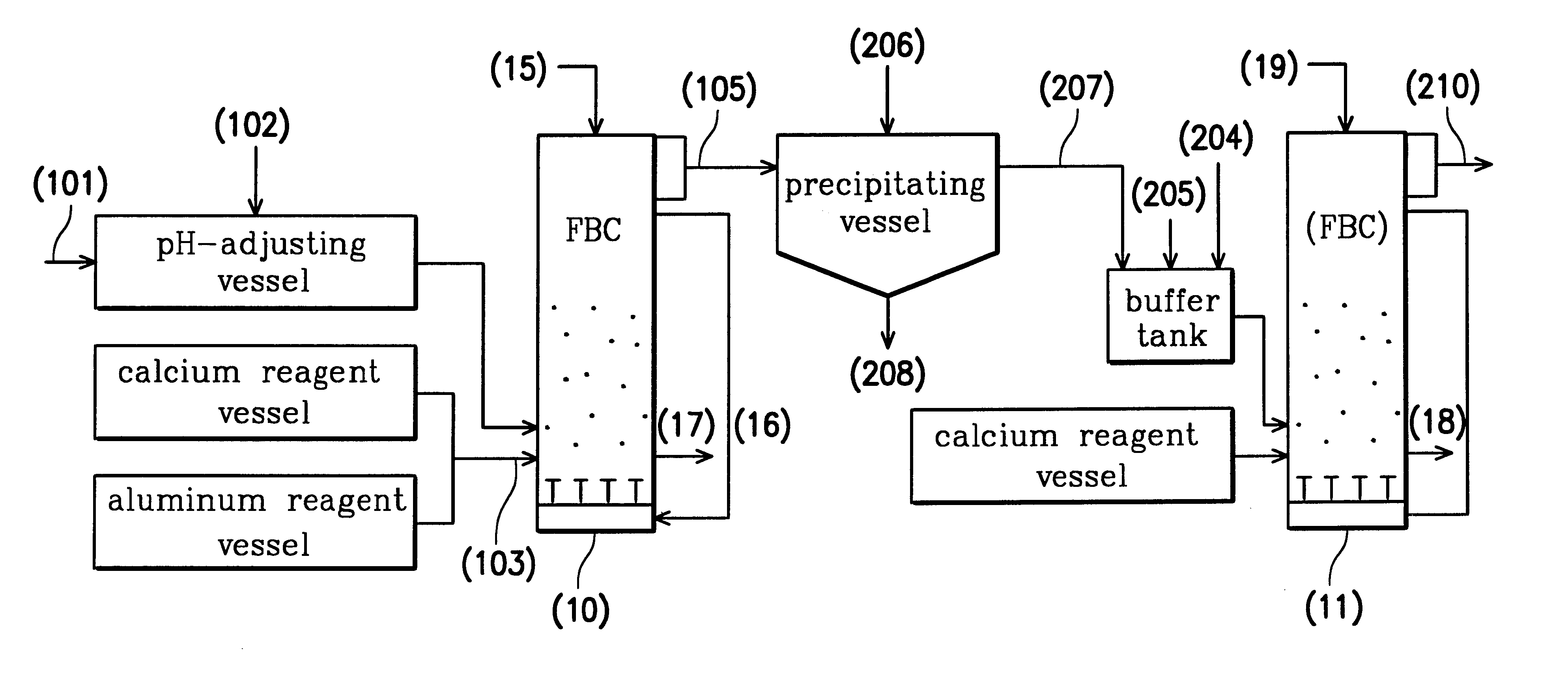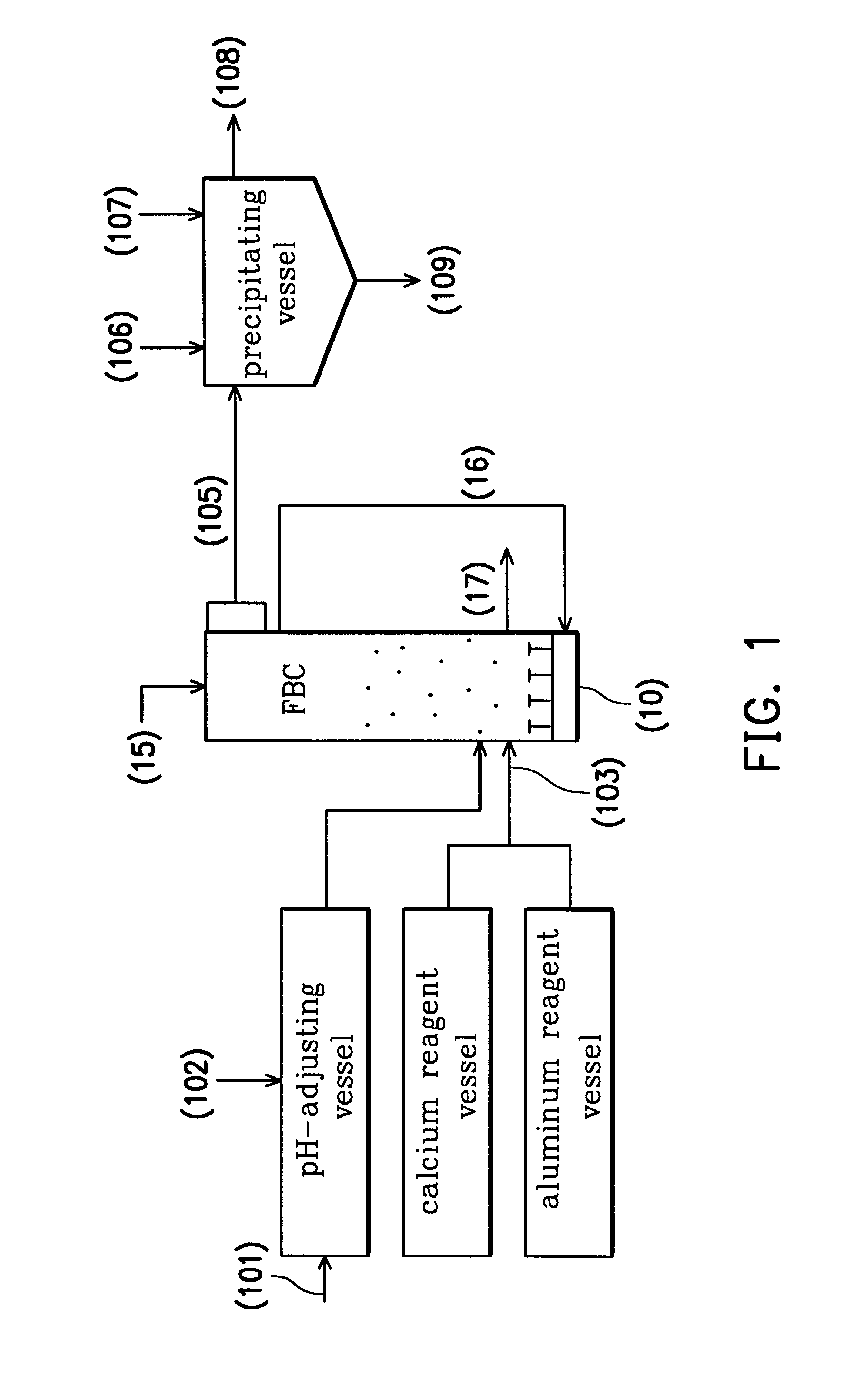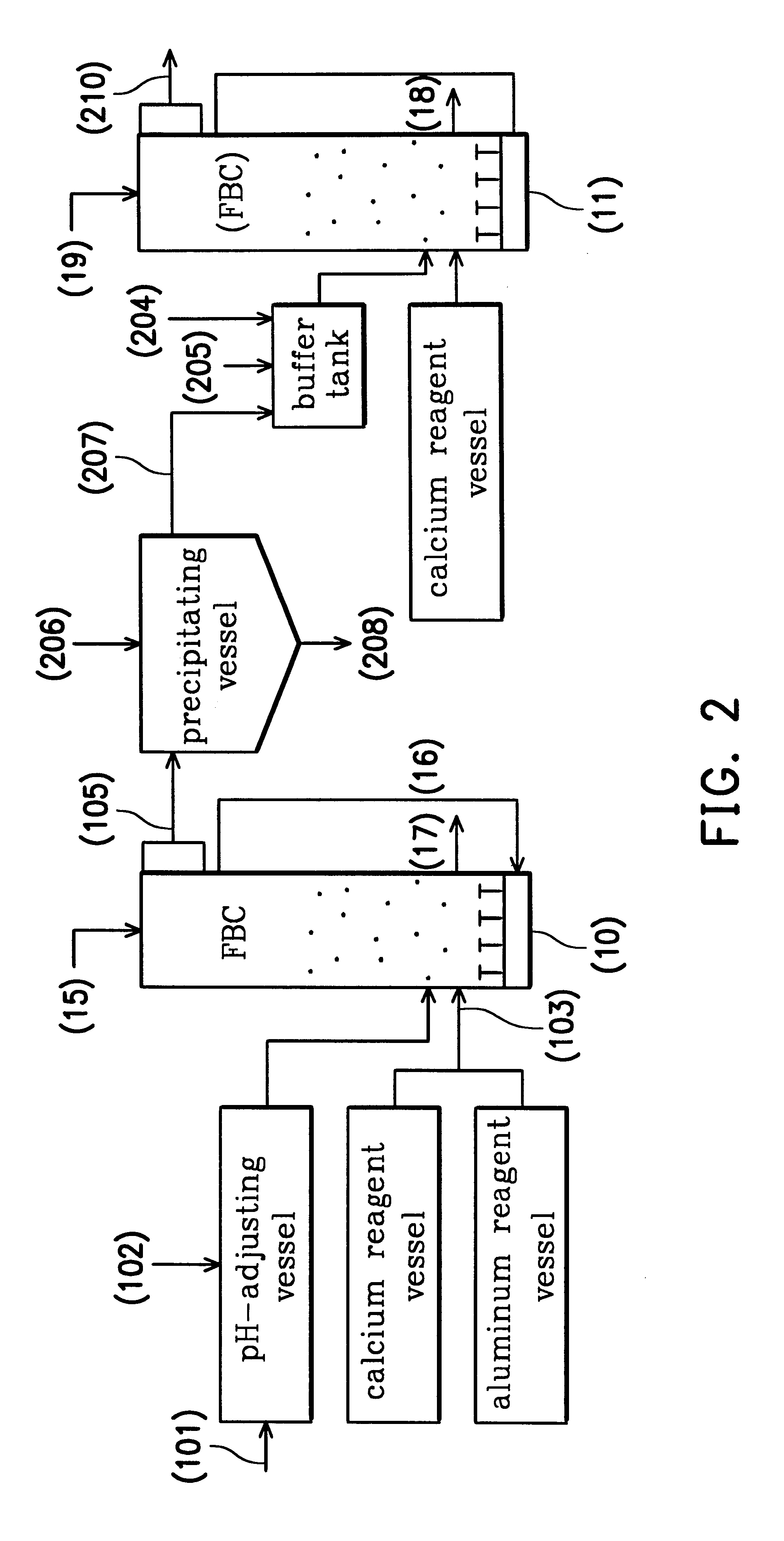Process for removing fluoride from wastewater
a technology for removing fluoride and wastewater, applied in separation processes, chemistry apparatus and processes, membrane technology, etc., can solve the problems of increasing the cost of manufacturing the apparatus for processing wastewater and the space occupied by the apparatus, the failure of japanese patents, and the fine particles that may clog the pipes
- Summary
- Abstract
- Description
- Claims
- Application Information
AI Technical Summary
Problems solved by technology
Method used
Image
Examples
example two
Referring to FIG. 2, two FBCs were used in this example, including a first FBC (10) for treating wastewater of high fluoride concentration and a second FBC (11) for treating wastewater of low fluoride concentration. Because example two and example one had the same parts, the descriptions of the same parts are omitted. From example one, it is understood that pachnolite grains were obtained by the first FBC (10). The total fluoride concentration of the primary treated water (105) was 291 mg / l and the dissoluble fluoride concentration was 180 mg / l.
The primary treated water (105) was introduced into a precipitating vessel, in which aqueous sodium hydroxide (206) was added so as to adjust the pH value of the primary treated water to about 7.0. Then, the water soluble aluminum ions in the primary treated water were reacted to form insoluble floc aluminum hydroxide. By stirring, the floc aluminum hydroxide adsorbed the fluoride to form a white coprecipitation (208) and a secondary treated ...
example three
The calcium reagent used in Example one can be replaced with a magnesium reagent to treat the wastewater in the FBC. Now referring to FIG. 3, a FBC (30) was filled with water and seeded with an adequate amount of carriers. The water was drawn out from the FBC and then introduced back into the FBC as indicated by reference number (36) to fluidize the carriers in the FBC. Fluoride-containing wastewater (301) was introduced into a pH-adjusting vessel and was adjusted by NaOH (302) to a pH value of 6.2. The adjusted wastewater containing fluoride and sodium had a concentration of 4800 mgF.sup.- / l and was then introduced into the FBC (30) at a flow rate of 10.0 ml / min. Also, a mixture (303) of a magnesium reagent and an aluminum reagent was introduced into the FBC (30) at a flow rate of 9.6 ml / min, in which the concentration of the magnesium ion was 900 mg / l and the concentration of the aluminum ion content was 900 mg / l (it is understood that the magnesium reagent and the aluminum reage...
example four
The coprecipitation (309) obtained from example three contains aluminum eons which can be recycled for utilization. Now referring to FIG. 4, the white coprecipitation (309) of aluminum hydroxide and fluoride obtained from example three was added to an aluminum salt dissolving vessel. Reference number (410) indicates hydroxide of an alkaline metal or sulfuric acid, either of which can dissolve the aluminum hydroxide in the aluminum salt dissolving vessel. For example, hydroxide of an alkaline metal (410) was added into the aluminum salt dissolving vessel to adjust the pH value therein to a value greater than 11 so that the aluminum hydroxide was dissolved to release aluminum ions. Alternatively, sulfuric acid (410) was added into the aluminum salt dissolving vessel to adjust the pH value therein to a value less than 3 so that the aluminum hydroxide was dissolved to release aluminum ions. Then, aluminum chloride (411) was added into the aluminum salt dissolving vessel to obtain an alu...
PUM
| Property | Measurement | Unit |
|---|---|---|
| Concentration | aaaaa | aaaaa |
| Molar ratio | aaaaa | aaaaa |
| Water solubility | aaaaa | aaaaa |
Abstract
Description
Claims
Application Information
 Login to View More
Login to View More - R&D
- Intellectual Property
- Life Sciences
- Materials
- Tech Scout
- Unparalleled Data Quality
- Higher Quality Content
- 60% Fewer Hallucinations
Browse by: Latest US Patents, China's latest patents, Technical Efficacy Thesaurus, Application Domain, Technology Topic, Popular Technical Reports.
© 2025 PatSnap. All rights reserved.Legal|Privacy policy|Modern Slavery Act Transparency Statement|Sitemap|About US| Contact US: help@patsnap.com



